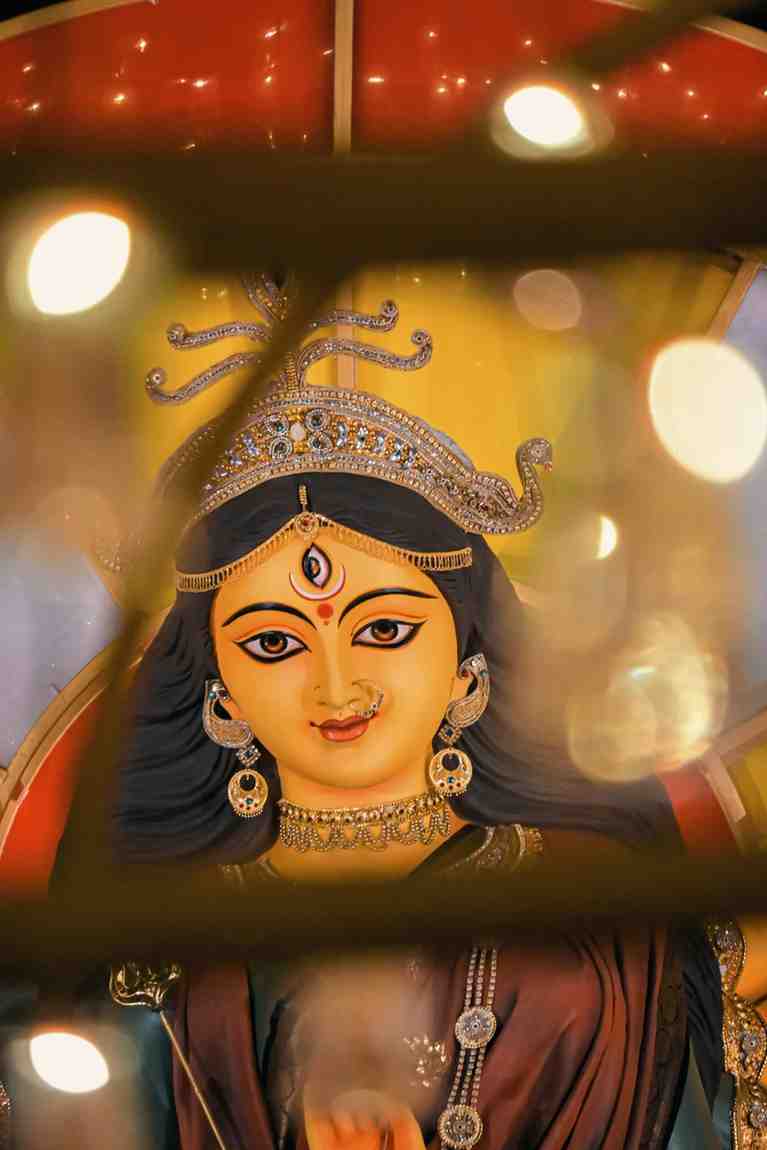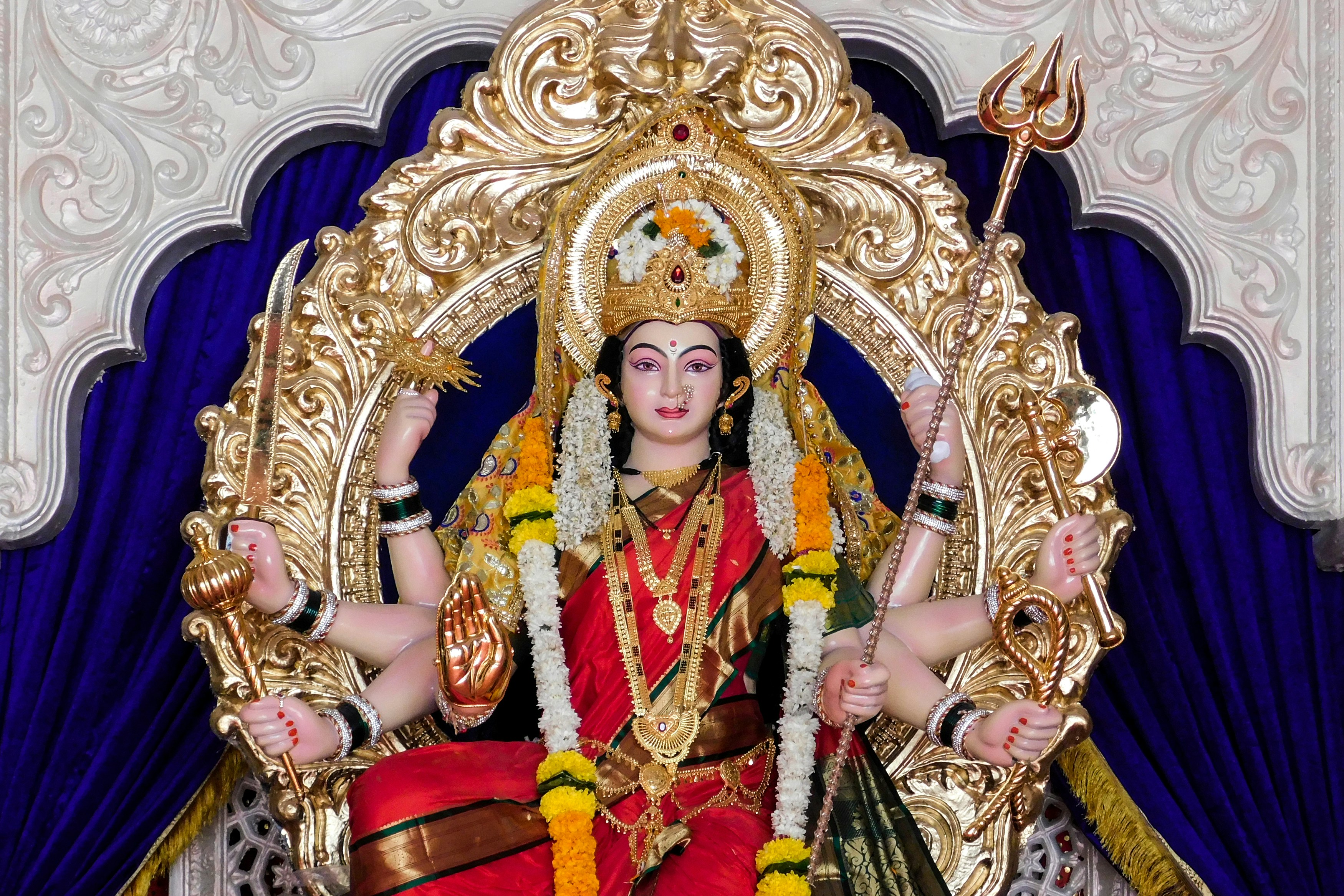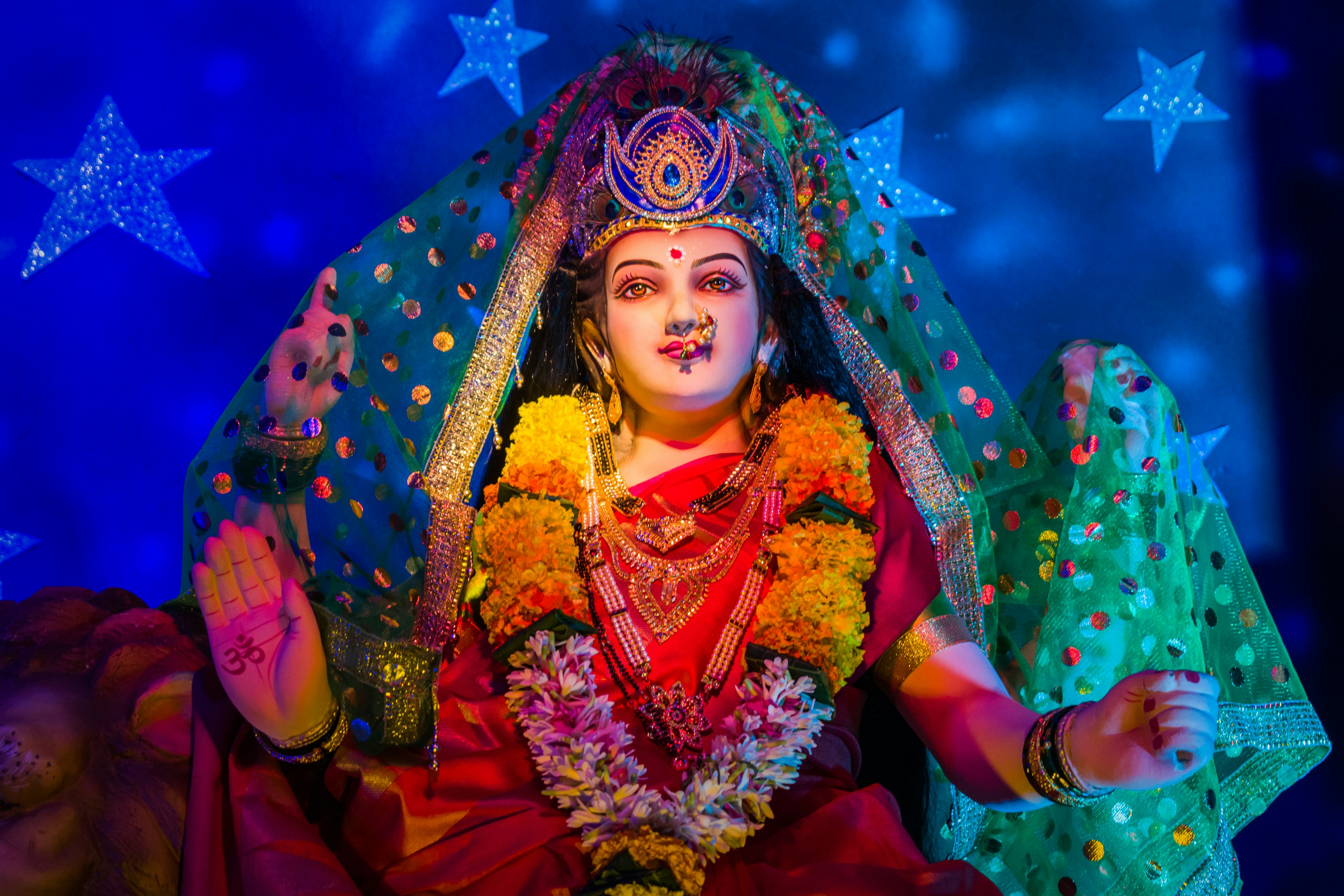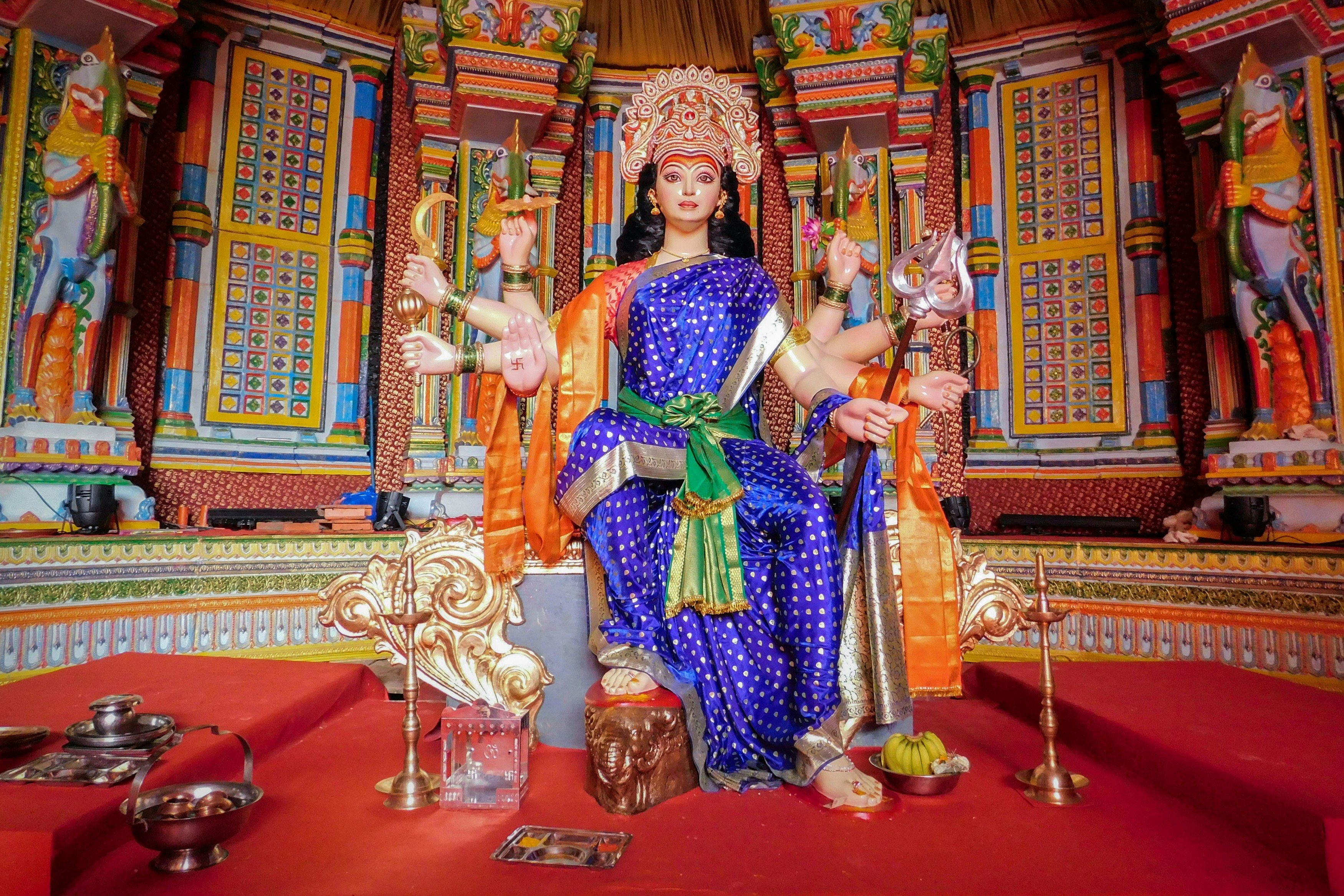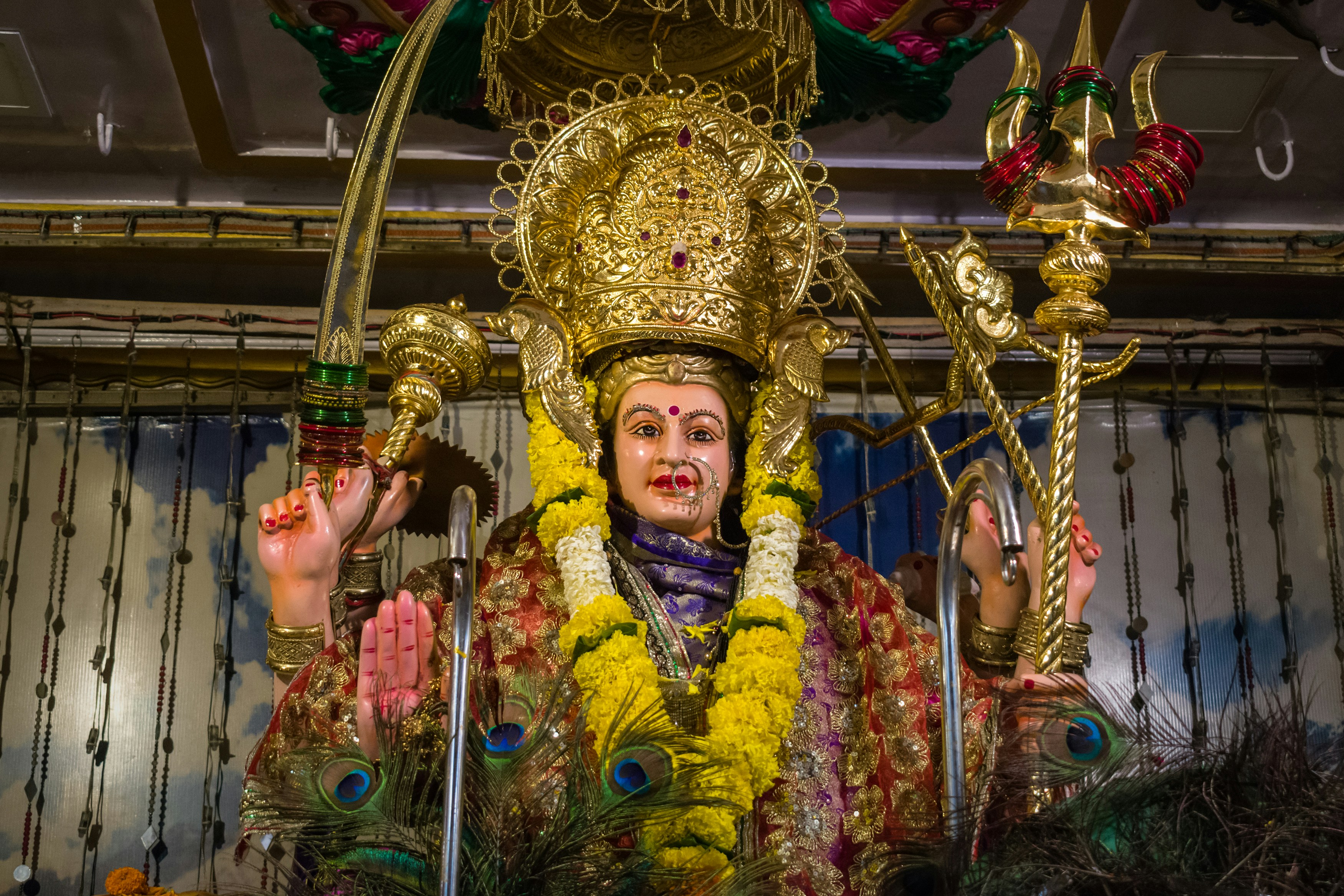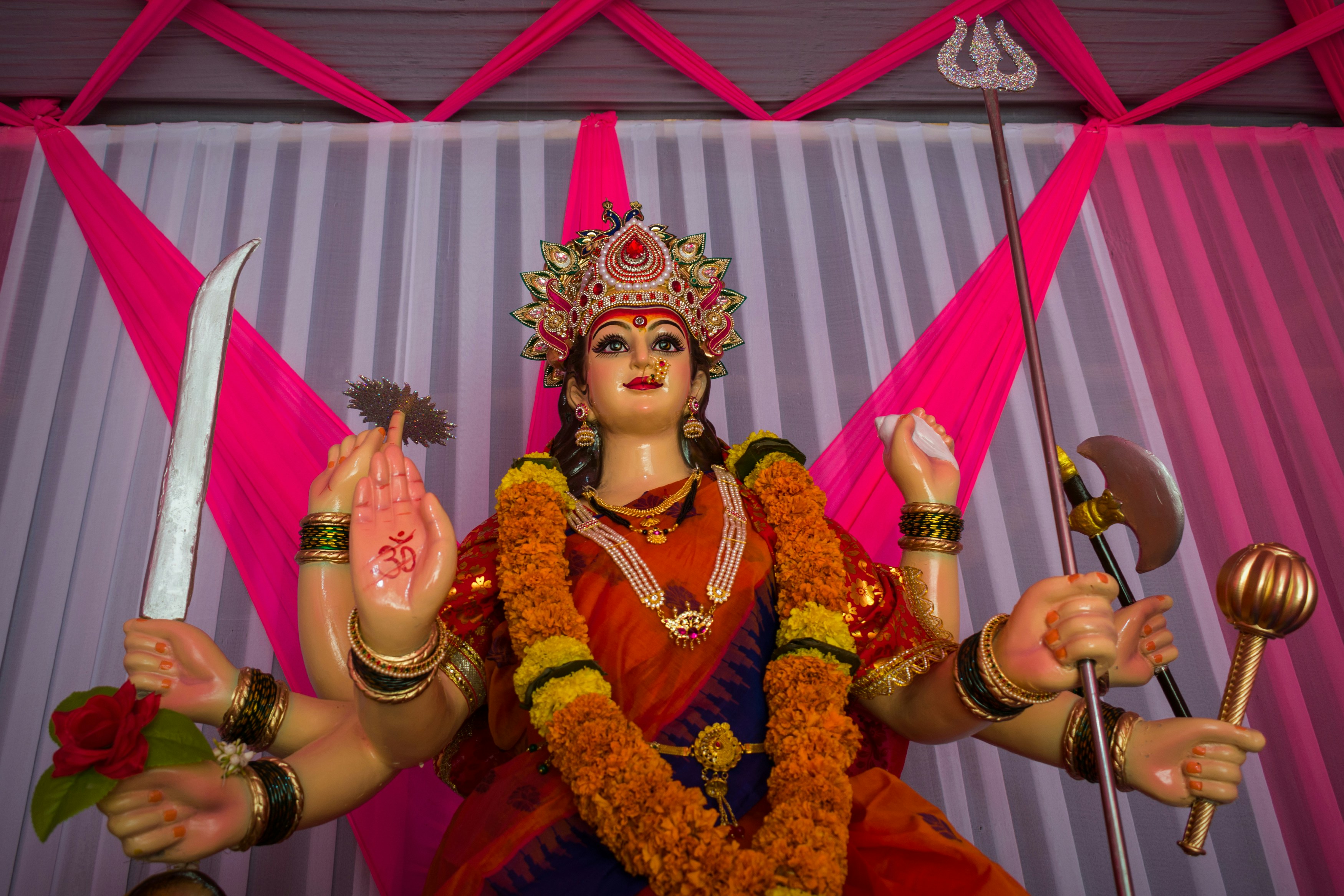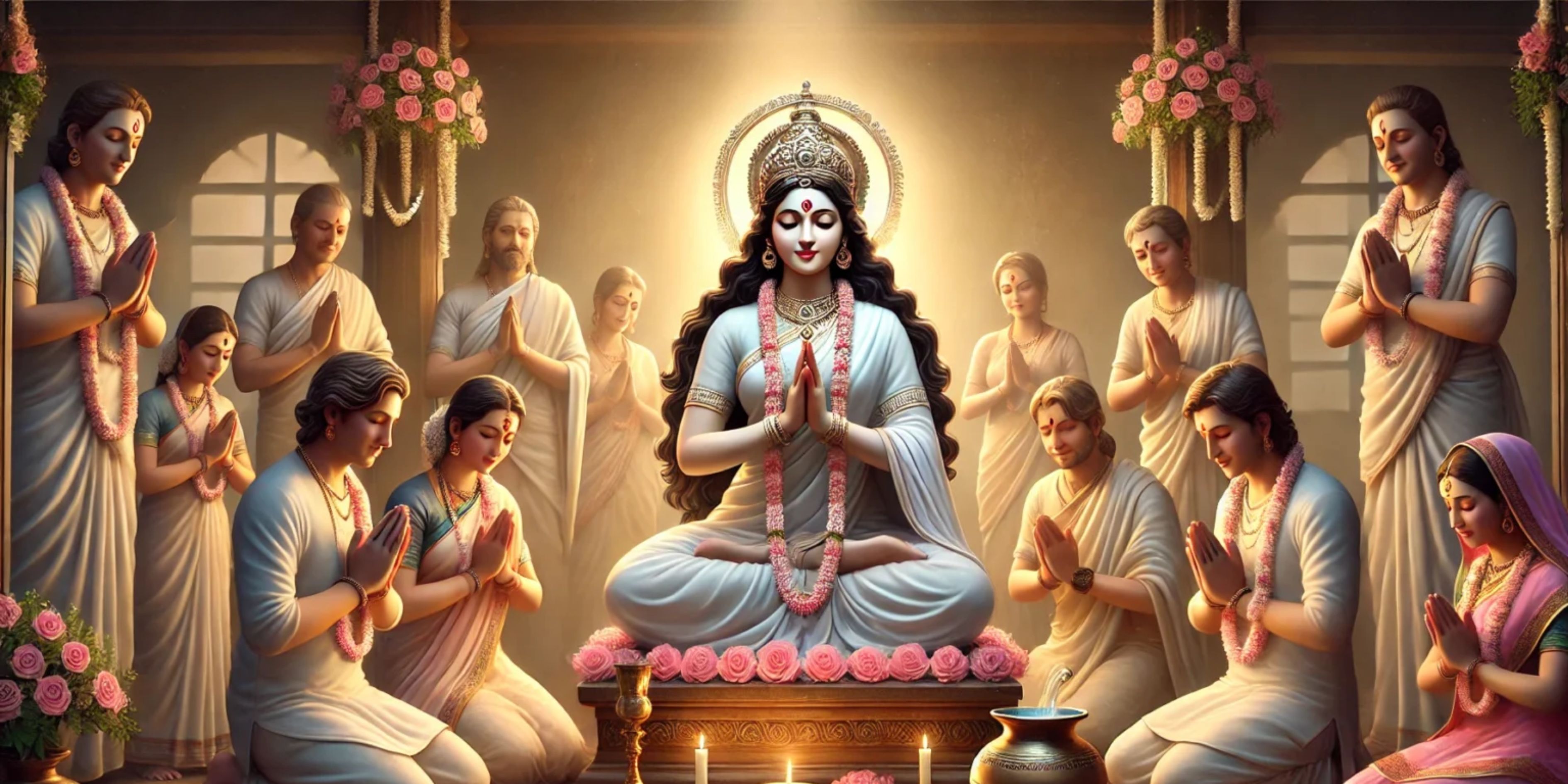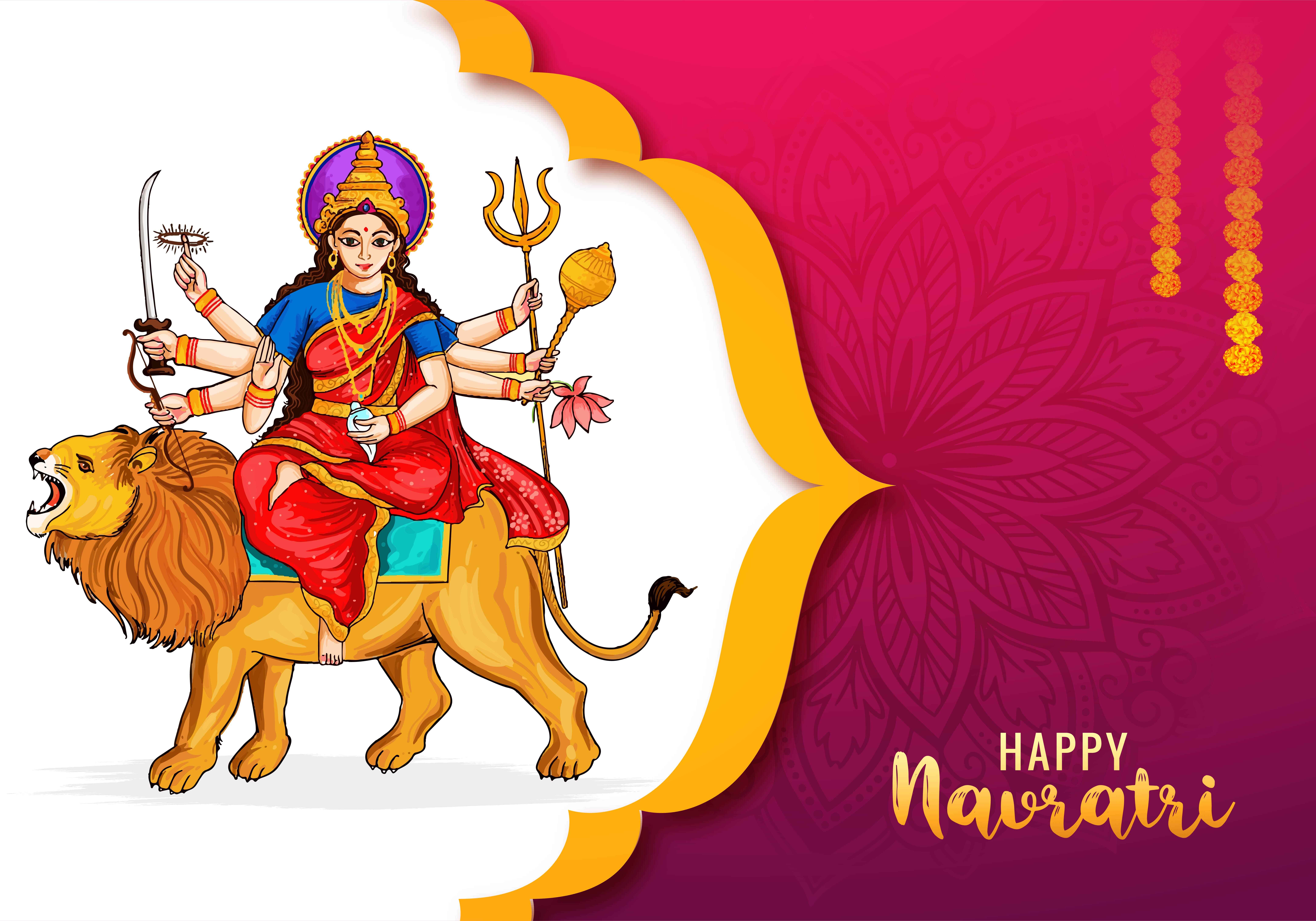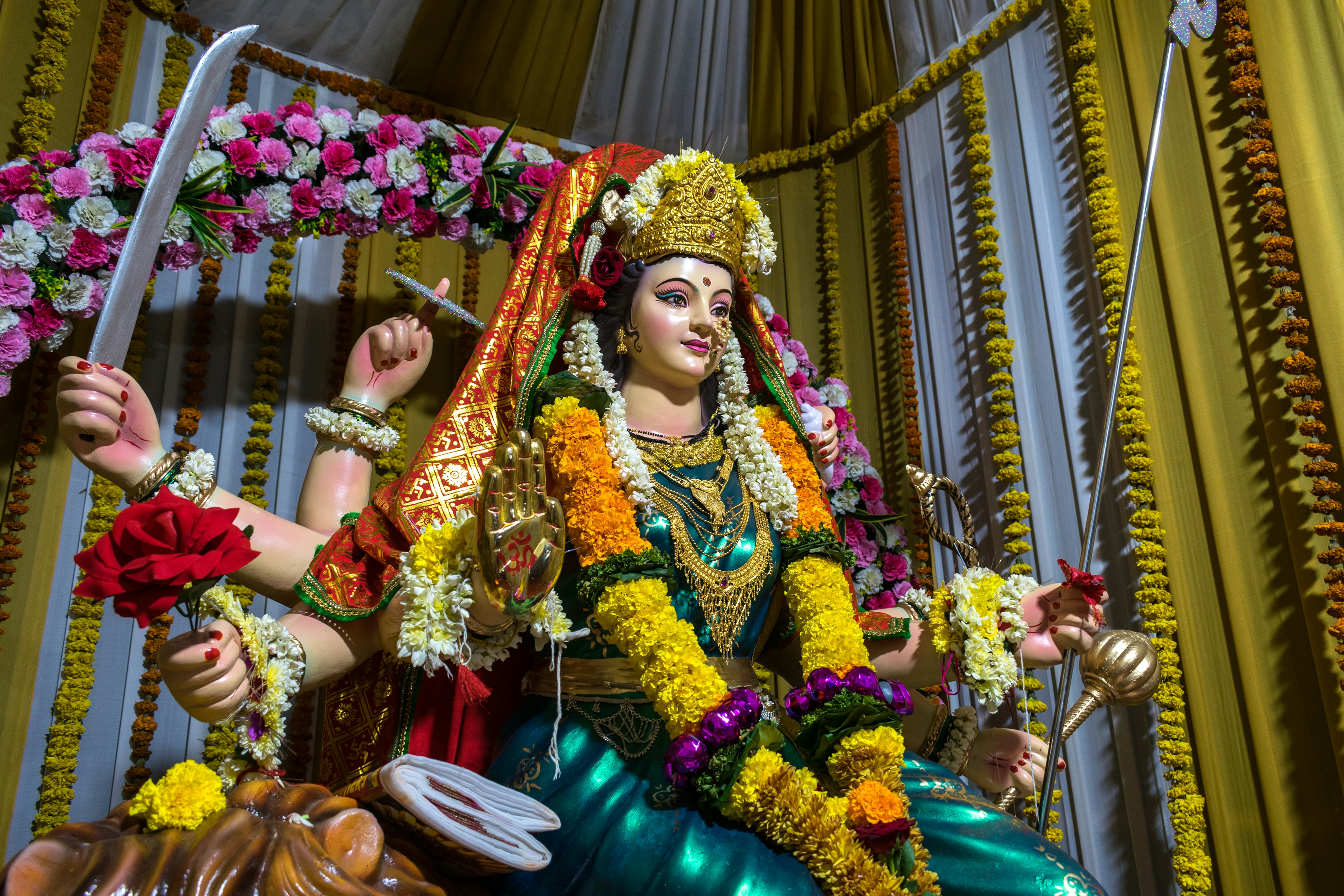Introduction | परिचय
By the ninth day, Navratri almost feels like a memory unfolding. The barley shoots in the Kalash are lush and full. The अखंड दीपक glows softly, its flame dancing gently. In many homes, people move more slowly footsteps lighter, voices softer.
The kitchen is quiet now. Sweets rest in steel bowls, prasad poised for offering. Flowers lie fresh, as if waiting. Children glance at the altar with reverence, and elders whisper before starting.
29 September 2025, the ninth day, Navami (नवमी), is for Maa Siddhidatri (माँ सिद्धिदात्री) the bestower of supernatural powers, the one who grants siddhi (perfections). This day closes the sacred nine with the promise of blessings, completeness, and grace.
Who is Maa Siddhidatri? | माँ सिद्धिदात्री कौन हैं?
Her name itself holds meaning. Siddhi means spiritual powers or perfections, Datri means giver. So she is the goddess who gives the ultimate gifts insight, spiritual success, harmony.
In images, she sits on a lotus or rides a lion or sometimes a celestial vehicle (Vahana). She is graceful, her demeanour calm but commanding. She often holds weapons in two hands (to protect dharma), and in the other hand a chakra, mala, lotus, or other symbols of wisdom and divine authority.
Devotees see her as the seal of all Navaratri’s journeys she is the culmination, the one who gives the fruits of all eight prior days’ worship.
Muhurat and Puja Timings | मुहूर्त और पूजा का समय
On Navami, devotees wake with extra reverence. The altar is re-cleaned, fresh flowers laid, and the oil for the diya tested.
Navami Tithi (नवमी तिथि): 29 September 2025
Morning Muhurat: Sunrise till mid-morning
Abhijit Muhurat (अभिजीत मुहूर्त): 11:51 AM to 12:39 PM
When the conch is blown today, the echo holds a fullness. The bells sound deeper. People feel as though not just worshipping, they are concluding, receiving.
Colour of the Day | दिन का रंग
The traditional colour for Day 9 is yellow (पीला / हल्का पीला).
Yellow is bright, warm, luminous. Devotees wear yellow sarees, kurtas, and scarves. The altar often uses yellow cloth, yellow marigolds, and maybe sandalwood or turmeric decorations. The idea is radiance, clarity, light.
After many days of deep hues and contrasting colours, yellow feels like dawn the promise of awakening, wisdom, and light in culmination.
Puja Vidhi and Samagri | पूजा विधि और सामग्री
- Samagri (सामग्री)
- Idol or image of Maa Siddhidatri
- Yellow flowers (मरिगोल्ड, चंबा)
- Fruits, sweets (prefer mild, sattvic)
- Incense, diya with ghee
- Sandalwood paste, camphor
- Kalash (with barley sprouts)
- Yellow cloth for the altar
Vidhi (विधि)
The idol is seated on the altar, dressed in a yellow cloth. A diya is lit. Incense smoke rises, golden in morning light. Flowers are offered, sweet fruits placed before her.
The mantra is chanted with devotion. Aarti is performed. As the flame circles, devotees close their eyes and feel not just offering, but receiving.
Often, people meditate after puja, feeling the energy of the nine nights, feeling blessings settle within.
Mantra and Prayer | मंत्र और प्रार्थना
मंत्र (Mantra):
ॐ देवी सिद्धिदात्री नमः ॥
Om Devi Siddhidatri Namah
Prayers / Verses:
She is addressed as the giver of all siddhis. Some stotra / verse lines call her: या देवी सर्वभूतेषु माँ सिद्धिदात्री रूपेण संस्थिता … नमस्तस्यै नमस्तस्यै नमस्तस्यै नमो नमः॥…
The mantras feel heavier today not in tone, but in weight. Each syllable feels like a seed of power being planted in the heart.
Significance of Worship | पूजा का महत्व
On the final day, worship of Maa Siddhidatri is believed to bring the full circle of Navratri’s blessings. Her grace is said to give:
- Spiritual insight and wisdom (बुद्धि)
- Fulfillment of vows and desires (इच्छा पूर्ति)
- Harmony, peace, completeness (समरसता, पूर्णता)
- The power to succeed (सिद्धि)
Devotees believe that after praying to her, one is purified, uplifted ready to carry Navratri’s energy into everyday life.
Story & Symbolism | कथा और प्रतीक
In some traditions, it is said that at the end of the battle, the Goddess appeared as Ardhanarishvara (half male, half female) combining Shiva and Shakti to show the unity of cosmic energy. Then, as the reconciler and bestower, she appeared as Siddhidatri to grant boons.
Some say she is the only goddess who gives siddhis (divine perfections) to all who worship knowledge, power, balance.
The symbolism is rich: after darkness, strength, purity, devotion, now the reward she who gives the fruit of that journey.
Cultural Reflections | सांस्कृतिक महत्व
Day 9 is quiet in some ways. In homes, the fragrance of incense mixes with the last bits of prasad. People sit together, children sometimes too full to move fast, and elders looking around the altar with contentment.
In Gujarat, Garba nights feel celebratory but there is more prayer in the music now. In Bengal, the final evening of Durga Puja, the Sindoor Khela, the immersion preparations all feel heavy with emotion. In villages, devotees often stay late, singing bhajans, exchanging hugs, sharing sweets, telling each other “अगली नवरात्रि फिर मिलेंगे।”
The day carries both an ending and a new beginning. It feels sacred, full, and hopeful.
Conclusion | निष्कर्ष
The ninth day of Navratri belongs to Maa Siddhidatri, the giver of perfections. She rides a lotus or lion, holds divine symbols, and blesses those who have journeyed through the nights of devotion.
By wearing yellow, offering flowers and sweets, chanting her mantras, and receiving her blessings, devotees complete Navratri’s circle.
As the diya burns its final hours and the chants fade into silence, what remains is gratitude gratitude for the journey, for the goddess, for what’s been given.
जय माँ सिद्धिदात्री!

